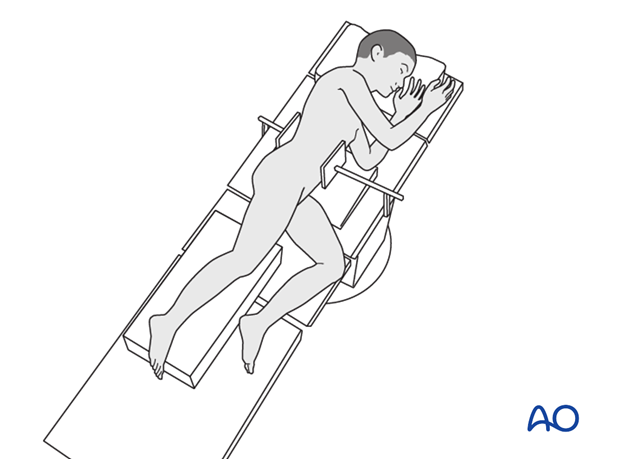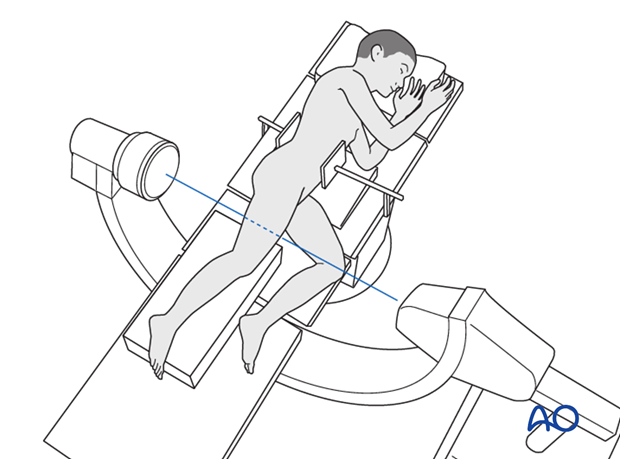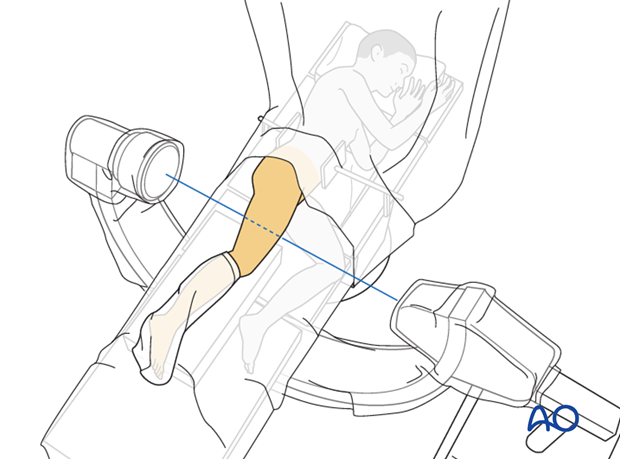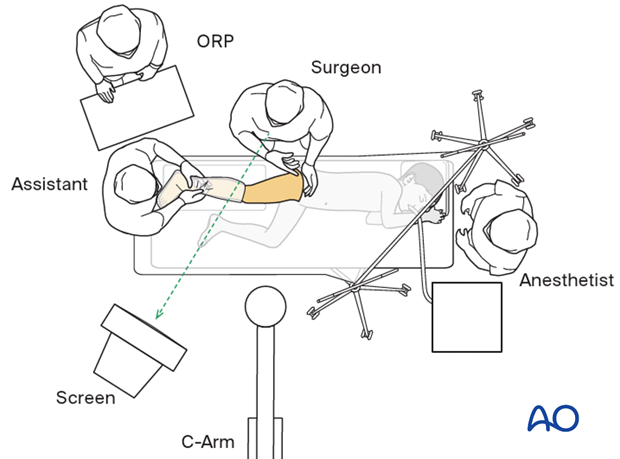Patient preparation in lateral position
1. Introduction
The lateral position provides good access to the greater trochanter for nailing.
Gravity displaces the soft tissues away from nail entry site.

2. Preoperative preparation
Read the additional material on preoperative preparation.
3. Anesthesia
- General anesthesia
- Local nerve block
- Combination of nerve block and light general anesthesia
4. Prophylactic antibiotics
Antibiotics are administered according to local antibiotic policy and specific patient requirements.
Many surgeons use Gram-positive prophylactic antibiotic cover for operative management of closed fractures, adding Gram-negative prophylactic cover for open fractures.
Antibiotic therapy will never compensate for poor surgical technique.
5. Clinical assessment of rotation of the femur
Prior to patient preparation and draping, examine the opposite intact femur to determine the rotational range-of-motion.
If the patient is supine, demonstrate femoral rotation with the hip and knee each flexed to 90°.
Internally and externally rotate the femur and record the maximum range.

6. Patient position
The patient is placed in a lateral position and securely held with props on the lumbar spine and the anterior superior iliac spine (ASIS).
The contralateral shoulder must be carefully positioned to prevent brachial plexus injury.
Bolsters, pads or a bean bag can be used to support the pelvis anteriorly and posteriorly.

7. C-arm positioning
Adjust the table and C-arm so that AP and lateral views can be obtained.
Position the C-arm perpendicular to the operating table.

8. Skin preparation and draping
Fully prepare and drape the leg.
Drape the C-arm of the image intensifier completely.

9. OR set-up
The optimal position of the surgeon is behind the patient with the operated leg slightly flexed and adducted to provide access to the femoral intramedullary canal.
The position of the screen should allow a direct view for the surgeon.














